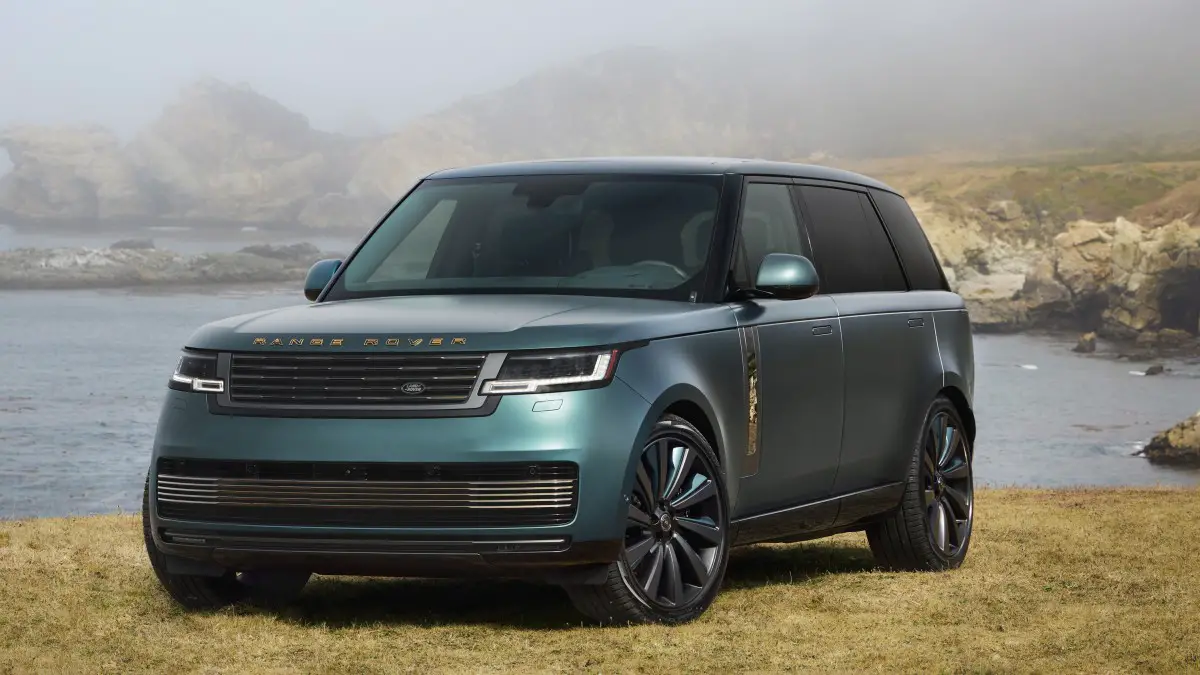Thomas Ingenlath is having perhaps a little too much fun in his Polestar 3, silently rocketing away from stop signs and swinging through tightening bends, grinning like a man far younger than his 59 years of age.
“You really can push this car,” the Polestar CEO says as he cruises the roads alongside other enthusiasts near Spanish Bay north of Pebble Beach during Monterey Car Week. Throughout the drive, he praises the SUV’s ability to be both comfortable and smooth while still delivering the engaging handling that buyers of the brand’s first two cars, the hybrid Polestar 1 and electric Polestar 2, have come to know and love.
In his neutral-hued suit, he almost blends into the pale interior of the full-size SUV, the yellow seatbelt across his chest providing the only contrast. It’s an aesthetic that matches the attitude of the car itself: a premium, minimalist feel with the sharp performance typical of Polestar machines.
Safe EV ground, shifting political sands
But the Polestar 3 marks a new way forward for the brand on U.S. streets. Though the car that Ingenlath hustles through traffic in Monterey was built in China, the first American-assembled Polestar 3 SUVs are just starting to roll off the factory lines at Polestar’s plant in Ridgeville, South Carolina.
That same factory has long made cars for Volvo, which is owned by China’s Geely Holding. Polestar — a spinoff of Volvo that’s headquartered in Sweden and also under Geely — now shares the space as it zooms forward in the United States amid headwinds from the recently imposed tariffs on Chinese EVs.
Indeed, while the company’s Polestar 2 is built in Gothenburg, all American-market Polestar 3 SUVs will come from South Carolina.
“Polestar 3 production is, I call it, on safe ground,” Ingenlath says.
Safe ground, perhaps, but undoubtedly shifting sands. Ingenlath sees EV demand in the U.S. market as evolving and requiring some patience: “How fast will that develop? We have to see,” he says. “but it’s certainly not something that worries me about the purpose of our company.”
Ingenlath says he would love for adoption rates to be even higher here, of course, but he’d be happier if United States politics could be “a bit more consistent.”
He’s watching the election closely. “All the noise around it is just disturbing,” he muses. “When you do a premium car brand, you need consistency. You need consistency in your model politics and your pricing and stuff, and of course, we would love, as well, for us to have a much more stable base for decision-making. And you cannot, you know, react on a weekly, monthly basis. You need years… to make meaningful economic decisions.”
Cars like the Polestar 3 take upwards of five years to design and develop. Moves like the new tariffs on Chinese-made EVs imported to the U.S. — which sprung up practically overnight — are a real threat.
Funding for EVs
That’s just one challenge Polestar has faced lately. At the beginning of 2024, Volvo divested a significant portion of its holdings in the company. It’s a move that Ingenlath downplays, noting that Volvo still holds roughly 18% of the company. “That’s not insignificant,” he says. “If you own 20% of a company, you’re pretty interested in how the company is doing.”
Polestar has turned to banks for a $1 billion loan to keep things on track. Ingenlath says that this change in ownership hasn’t resulted in his running the business differently. Still, he says, it’s always good to focus on the fundamentals.
“It’s important now to show them execution capability,” Ingenlath remarks of his obligations to the banks, “that we have these superb cars coming out, that we have the markets successfully launching a car, delivering and selling.”
Ingenlath declines to say whether Polestar might need more financing to execute that plan but says his focus now is making Polestar “self-sustaining.”
A bet on SUVs
The Polestar 3 is integral to that plan. Though the Polestar 2 is a sweet-driving, clean-looking sedan, it’s playing in a market dominated by SUVs in the U.S. Ingenlath calls it “rather a compact European sedan here, which will not fulfill the needs of a family.”
The Polestar 3 should fare better in that regard, at least for families that can afford its $73,400 starting price. The vehicle is much larger, more upright, and roomier than the Polestar 2, and still promises a taste of the same driving character.
Importantly, sales growth is required to set the stage for Polestar’s next releases.
The iterative nomenclature continues with the Polestar 4, a smaller SUV that trades some of the Polestar 4’s volume (and all of its rearward visibility) for a dramatically sweeping roofline and a more affordable price point, starting at $54,900.
After that comes the Polestar 5, a sporty, stylish sedan that ties into the brand’s design-forward focus, an attribute that Ingenlath says is more important to the business than federal EV subsidies. “We should lure people behind the wheel of a Polestar, buying our products, because they’re just so damn desirable, and they want to have them,” he says.
The Polestar 4 is set to arrive later this year, with the Polestar 5 coming in 2025. It’s an aggressive timeline considering the Polestar 2 has effectively been the company’s lone offering in the U.S. market for nearly four years.
That wasn’t supposed to be the plan. The Polestar 3 has seen significant delays thanks to software issues that has also sidelined its corporate sibling, the Volvo EX90. Still, Ingenlath says that technology sharing with Volvo is a key part of Polestar’s ability to iterate quickly.
“Why would we develop ADAS systems ourselves?” he asks. “Of course, Volvo delivers here a technology base which is excellent for that premium vehicle that we want to build.”
That technology sharing will continue despite Volvo’s partial divestment. Volvo isn’t its only partner. Polestar was an early adopter of Android Automotive, effectively handing all the in-car interface over to Google.
“That’s one of the nicest and smoothest success stories of actually implementing technology,” he says, a decision that was initially met with skepticism. “People were like, ‘Oh, what are you doing? Are you really going in bed with Google? Blah, blah, blah.’ There were so many raised eyebrows about that. Jesus, our customers love it. It’s such a step forward in terms of ease of use.”
The real step forward for Polestar will be the long-awaited release of the Polestar 3, something that Ingenlath says will now happen within “weeks.”










